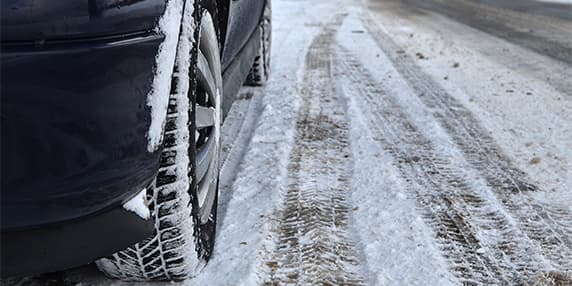Newsroom
ICBC: Recent snowfall leads to dramatic spike in claims
December 01, 2022

The snowfall on B.C.'s South Coast this week has led to a sudden increase in reported ICBC claims. On Tuesday, November 29, claims increased by 94% (3,567) compared to Tuesday of the week prior (1,837).*
With the possibility of more snow in the coming days and weeks ahead, ICBC is asking drivers to slow down and adjust their driving to winter conditions, and ensure their vehicle is prepared.
Tips for driving in the snow:
Equip your vehicle. Ensure you have the proper tires for driving in the snow and ice. In B.C., winter tires are defined as those labelled with either the mountain snowflake symbol or the mud and snow (M+S) symbol. Winter tires must be in good condition with a minimum tread depth of 3.5 mm. Make sure your headlights and taillights are in good working order and use them whenever visibility is reduced. Pack an emergency kit in your vehicle in case you get stuck or stranded. Clear off any snow that's built up on your vehicle before driving including headlights, wheel wells and external sensors if you have a collision warning system. Visit Shift into Winter for more information on preparing your vehicle for winter driving.
Take it slow and steady. The key to driving in snowy and slippery conditions is to drive slow and steady, avoiding any unexpected sudden movements that could cause you to skid or lose control. If you have to drive, accelerate gently, steer and turn slowly and gradually, braking slowly and early. Increase your following distance while travelling behind vehicles and focus on your surroundings so you can be prepared for the unexpected. Anticipate turns, stops and lane changes well in advance. Don't use cruise control on slippery roads.
Be patient. Allow extra travel time to get to your destination. Plan your route ahead of time and visit drivebc.ca to check for current road conditions and possible road closures. Don't pass snow plows on the road as it's not safe. These vehicles may be equipped with a wing blade on either of its sides which may not be visible due to the snow it sprays.
Be aware. When temperatures near freezing, be aware of black ice. If you notice ice build-up on your windshield, there's likely black ice on the road. Black ice is commonly found in shaded areas, bridges, overpasses and intersections. Slow down and increase your following distance in these slippery areas. When changing lanes, pay attention to the snow or slush on the road. Wait for an area that has the least amount of snow or slush, signal well in advance and slowly complete your lane change. Focus your full attention on the road and use extra caution when approaching intersections. It can be difficult to see pedestrians and other road users when visibility is reduced.
Consider not driving. If you don't have to drive in poor conditions, that is the safer choice. When snow is in the forecast, plan ahead to avoid driving if possible. Take public transit if it's an option in your area. Call a taxi or ride-hailing service. Work from home if you're able to, or wait until the road crews have cleared the major roads.
*Total ICBC claims reported in B.C.
Week of November 20 to 26, 2022
Sun, Nov. 20 | Mon, Nov. 21 | Tue, Nov. 22 | Wed, Nov. 23 | Thu, Nov. 24 | Fri, | Sat, Nov. 26 |
|---|---|---|---|---|---|---|
1,017 | 1,536 | 1,837 | 1,618 | 1,455 | 1,609 | 1,245 |
Week of November 27 to 30, 2022
Sun, Nov. 27 | Mon, Nov. 28 | Tue, Nov. 29 | Wed, Nov. 30 |
|---|---|---|---|
1,016 | 1,445 | 3,567 | 997 |
Dates refer to the date claims occurred. Report as of 12pm on December 1. Data may settle further or be restated as claims continue to be reported.
